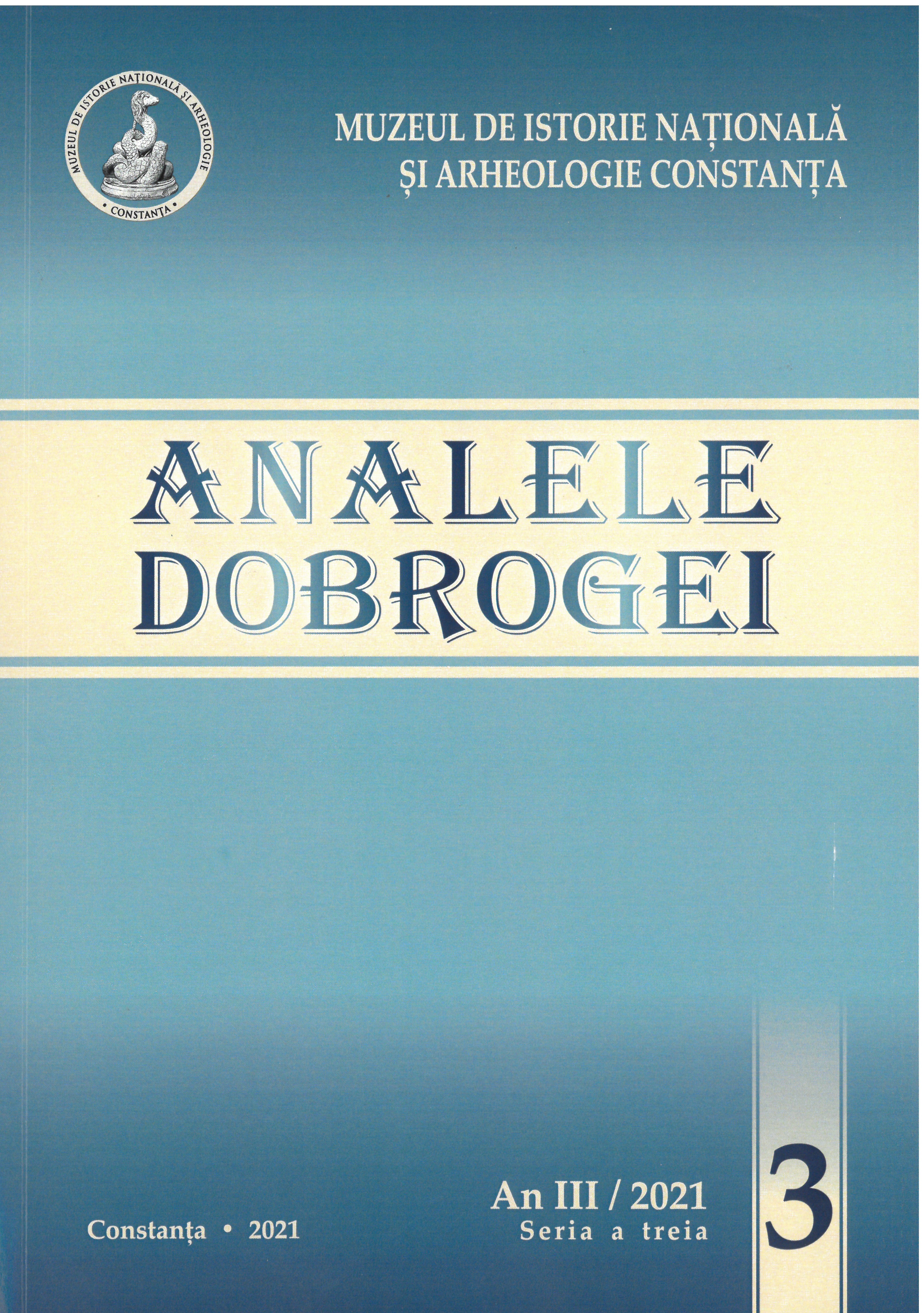EVOLUȚIA IREDENTEI BULGARE DIN DOBROGEA INTERBELICĂ, REFLECTATĂ ÎNTR-O SINTEZĂ MILITARĂ DIN LUNA APRILIE 1938
THE EVOLUTION OF BULGARIAN IREDENCE IN THE INTERWAR DOBROGEA, REFLECTED IN A MILITARY SYNTHESIS OF APRIL 1938
Author(s): Petrișor Florea, George UngureanuSubject(s): Politics / Political Sciences, History, Social Sciences, Ethnohistory, Nationalism Studies, Interwar Period (1920 - 1939), Inter-Ethnic Relations, Peace and Conflict Studies
Published by: Muzeul de Istorie Națională și Arheologie Constanța
Keywords: irredentism; subversive organizations; financing; propaganda; terrorism; retaliation;
Summary/Abstract: Within the complex and dynamic framework of the realities and evolutions of the interwar Romanian Dobrogea, the activity of the so-called Bulgarian Iredent was also registered as a conflicting but notable phenomenon. Under this generic name, we can find a multitude of organizations, associations and groups, composed of ethnic Bulgarians, who, by generally illegal means, often even violent, terrorist, challenged and undermined the authority of the Romanian state in the province between the Danube and the Sea. Bulgarian subversive activities were more intense in the southern part of Dobrogea, in the counties of Durostor and Caliacra (Quadrilater), a territory obtained in Romania in 1913, where ethnic Bulgarians represented over 40% of the population and authoritatively dominated economic and social life. When approaching this topic, one can notice a great Romanian-Bulgarian historiographical imbalance, especially a quantitative one, to the detriment of Romanian historians. The starting point for this communication was represented by the archival file no. 817/1938 from the General Staff fund-Section 2 Information, having the character of historical-informative synthesis. The file contains only 17 pages, but it is dense in information and appreciations on our topic. The data and evaluations in the mentioned file were compared, corroborated and supplemented with other historical sources, both Romanian (primarily, documents and collections of documents), as well as Bulgarian (including volumes of published documents) and Western (synthesis by Alberto Basciani, dedicated to the Romanian-Bulgarian dispute in the interwar Dobrogea). The historical-informative synthesis elaborated in April 1938 is structured in four unequal parts, to which one added two annexes, namely: 1. Brief history and purpose; 2. The activity of the Bulgarian irredentism in 1937; 3. The evolution of the irredentist activity in the period 1919-1937; 4. Proposals to combat the action of Bulgarian irredentism in Romania. Annex 1 consists of a graph illustrating the intensity of irredentist activities in the interwar period, in chronological stages, and Annex 2 represents a map of Dobrogea, on which one chromatically represented the density of Bulgarian irredentist elements. Starting from the finding, pertinent in itself, that the Bulgarian irredentist activities in Romanian Dobrogea could not be carried out without the competition or at least without the permission of the Bulgarian authorities, the authors of the 1938 synthesis divided the period 1919-1938 into eight chronological stages considered and presented as homogeneous, exclusively depending on the succession of the various governments in Sofia. Also, the differences, divergences and internal confrontations within the Bulgarian irredentism, identified exclusively with the Dobrogean Internal Revolutionary Organization (V.D.R.O.), were overlooked. Consequently, due to these abusive generalizations and omissions, the chronological delimitations and the assessments from the synthesis analyzed by us, can only be partially supported today, in the light of the data we have. However, the document in question remains a source worthy of consultation and presentation, being emblematic of the perception of some Romanian military structures on the Bulgarian irredentism.
Journal: Analele Dobrogei
- Issue Year: I/2021
- Issue No: III seria3
- Page Range: 85 - 103
- Page Count: 19
- Language: Romanian

